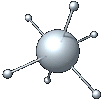
 |
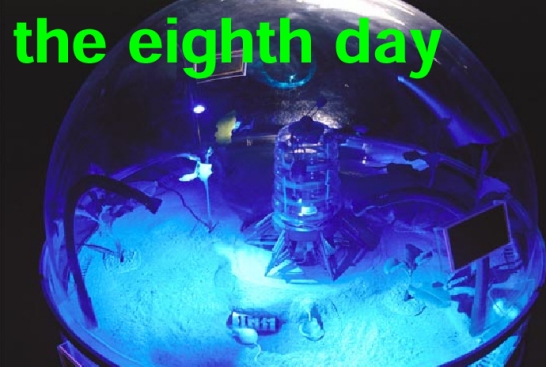 |
by
eduardo kac |
"The Eighth Day" is a transgenic artwork that investigates the new ecology of fluorescent creatures that is evolving worldwide. I developed this work at the Institute for Studies in the Arts, Arizona State University, Tempe, where it was exhibited in 2001. [1] While fluorescent creatures exist in isolation in laboratories, seen collectively they form the nucleus of a new synthetic bioluminescent system. The piece brings together living transgenic life forms and a biological robot (biobot) in an environment housed under a clear 4 foot diameter Plexiglas dome, thus making visible what it would be like if these creatures would in fact coexist in the world at large.
TRANSGENIC
ECOLOGIES
The
Eighth Day" dramatizes this condition by bringing together beings originally
developed in isolation in laboratories, now selected and bred specifically
for "The Eighth Day." Selective breeding and mutation are two key evolutionary
forces. "The Eighth Day" literally touches on the question of transgenic
evolution.
TRANSGENIC
BIOROBOTICS
THE
VIEW FROM WITHIN Local
viewers may temporarily believe that their gaze is the only human gaze
contemplating the organisms in the dome. However, once they navigate the
Web interface they realize that remote viewers can also experience the
environment from a bird's eye point of view, looking down through a camera
mounted above the dome. They can pan, tilt, and zoom, seeing humans, mice,
plants, fish and the biobot up close. Thus, from the point of view of the
online participant, local viewers become part of the ecology of living
creatures featured in the work, as if enclosed in a websphere. By enabling
participants to experience the environment inside the dome from the point
of view of the biobot, "The Eighth Day" creates a context in which participants
can reflect on the meaning of a transgenic ecology from a first-person
perspective.
THE
TRANSGENIC HUMAN CONDITION NOTES
2 -
It is important to point out that all organisms were in excellent health
and had all of their needs taken care of on a daily basis, before, during,
and after the exhibition.
3 -
This is true primarily in the USA, since many crops in the USA (corn, cotton,
canola, and soy, for example) are transgenic, but also increasingly in
other parts of the world, most notably Argentina, Canada, and China. In
fact, the American Association for Health Freedom indicated in 2001 that
more than 60% of processed food in the United States contains genetically
engineered ingre-dients, including baking mixes, soft drinks, cereals,
soups, cooking oils, salad dressings, juices, canned foods, crackers, snacks
and baby food. This figure was reinforced by a survey by the International
Food Information Council.
4 -
The new pigs were created in Japan by a team coordinated by Norio Murata,
a professor at the National Institute for Basic Biology. See: "Scientists
insert spinach gene into pigs to cut fat". Mainichi Shimbun, January 24,
2002. The grapes with genes found in the silkworm larvae were developed
to resist Pierce's disease by a team led by Dennis Gray, a University of
Florida professor of developmental biology. On May 15, 2001, the U.S. Patent
and Trademark Office issued a joint patent for the technology to the University
of Florida and the U.S. Department of Agriculture. The potatoes with genes
of bees and moths were developed to fight potato blight fungus, the same
that caused the Great Irish Potato Famine of 1845. See: Milan Osusky and
others. Cationic Peptide Expression in Transgenic Potato Confers Broad-Spectrum
Resistance to Phytopathogens. Nature Biotechnology 17, 01 Nov 1999, p.
45 and Trisha Gura. Engineering Protection for Plants. Science, March 16
2001, p. 2070.
5 -
Dyctiostelium discoideum is also known as slime mold. Slime molds are classified
in a major group called the eukarya (or eukary-otes ), which includes plants
and animals.
6 -
The internal sensing unit is composed of : 1) blue LED array to stimulate
amoebae to glow green; 2) PC17YC microscopic color video camera (1/3" color
CCD imager; 450 lines of resolution; 2 lux minimum illumina-tion; 74 degree
field of view); 3) a special yellow filter for the camera that enables
it to block the blue light and image the green glow. Customized software
tracks changes in the video image and passes the data to another software
which instructs the biobot legs to move.
7 -The
biobot legs are made of a Nylon variant called Nylatron, a material that
contains solid lubricants that impart toughness, low coefficient of friction,
and good abrasion resistance. Its muscles are made of shape-memory alloy,
a material that undergoes thermoelastic transformation, i.e., that has
the ability to return to a predetermined shape when heated.
8 -
The eye of the biobot is composed of a PC63XP monochrome mini video camera
(70 degree field of view; 380 lines of resolution, 1 lux low light rating).
9 -
A "consensual domain" does not imply consensus; rather, it signifies consensuality,
a coincidence of the sensuous.
10
- See Brown T. A.. Genomes (Oxford, UK : Bios scientific publishers, 1999),
p.138; and Baltimore, David. "Our genome unveiled", Nature 409, 15 February
2001, pp. 814-816. In private email correspondence (28 January 2002), and
as a follow up to our previous conversation on the topic, Dr. Jens Reich,
Division of Genomic Informatics of the Max Delbruck Center in Berlin-Buch,
stated: "The explanation for these massive [viral] inserts into our genome
(which, incidentally, looks like a garbage bin anyway) is usually that
these elements were acquired into germ cells by retrovirus infection and
subsequent dispersion over the genome some 10 to 40 millions ago (as we
still were early apes)." The HGP also suggests that humans have hundreds
of bacterial genes in the genome. See: International Human Genome Sequencing
Consortium. "Initial sequencing and analysis of the human genome", 15 February
2001 Volume 409, No. 6822, p. 860. Of the 223 genes coding for proteins
that are also present in bacteria and in vertebrates, 113 cases are believed
to be confirmed. See p. 903 of the same issue. In the same correspondence
mentioned above, Dr. Reich con-cluded: "It appears that it is not man,
but all vertebrates who are transgenic in the sense that they acquired
a gene from a microorganism."
11
- This natural ability has made a geneti-cally engineered version of the
agrobacterium a favorite tool of molecular biology. See: Herrera-Estrella
L. (1983). Transfer and expression of foreign genes in plants. PhD thesis.
Laboratory of Genetics, Gent University, Belgium; Hooykaas P.J.J. and Shilperoort
R.A. (1992). Agrobacterium and plant genetic engineering. Plant Molecular
Biology 19:15-38; Zupan J.R. and Zambryski P.C. (1995). Transfer of T-DNA
from Agrobacterium to the plant cell. Plant Physiology 107 : 10
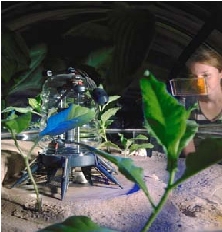
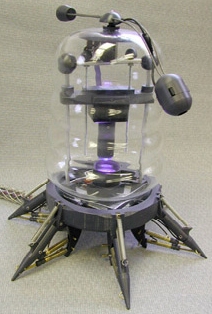
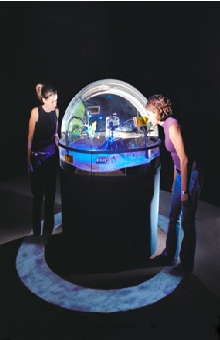
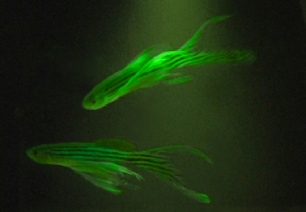
1
- "The Eighth Day" team: Richard Loveless, Dan Collins, Sheilah Britton,
Jeffery (Alan) Rawls, Jean Wilson-Rawls, Barbara Eschbach, Julia Friedman,
Isa Gordon, Charles Kazilek, Ozzie Kidane, George Pawl, Kelly Phillips,
David Lorig, Frances Salas, and James Stewart. Additional thanks to Andras
Nagy, Samuel Lunenfeld Research Institute, Toronto; Richard Firtel, University
of California, San Diego; and Chi-Bin Chien, University of Utah, Salt Lake
City.